Historical Context and Design
In order to comprehend the comfort levels of Hanfu, it is crucial to delve into its historical context and intricate design elements. Understanding the origins and the thought process behind its creation sheds light on how this traditional attire affects wearers today.
Historical Origins
The roots of Hanfu can be traced back to ancient China, with a history spanning over three millennia. This attire was prevalent during various dynastic eras, such as the Zhou, Qin, Han, and Tang dynasties. Hanfu embodies a profound connection to Chinese culture, reflecting its rich history and traditions.
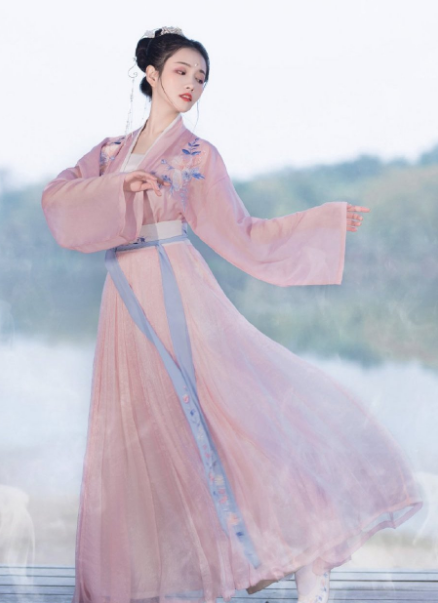
Traditional Design Elements
Silhouette and Shape: Hanfu garments typically feature flowing and loose-fitting silhouettes. This design prioritizes freedom of movement and breathability, allowing wearers to go about their daily activities with ease. The loose sleeves and wide pants contribute to this relaxed fit.
Layering: One of the distinctive design aspects of Hanfu is its layering technique. Multiple layers of clothing, such as the ruqun (襦裙) for women or the zhongyi (中衣) for men, provide insulation and comfort, especially during changing seasons.
Fabrics and Materials: Hanfu is traditionally crafted from natural fibers like silk and linen. Silk, known for its softness and breathability, enhances comfort. Linen, on the other hand, offers excellent moisture-wicking properties, making it suitable for different weather conditions.
Accessories: Accessories like the sash (带) and the belt (腰带) not only serve decorative purposes but also contribute to comfort by ensuring a secure fit and allowing for adjustments as needed.
Impact on Contemporary Comfort
While the historical design of Hanfu prioritized comfort for wearers in ancient times, modern adaptations have incorporated elements to make it more practical for today’s lifestyles. These adaptations may include the use of lighter and more breathable fabrics or adjustments in the design to accommodate modern activities.
In conclusion, the historical context and design elements of Hanfu provide valuable insights into its comfort as a traditional attire. The loose-fitting silhouette, layering technique, choice of fabrics, and thoughtful accessories all contribute to its overall comfort, making it a unique and culturally significant clothing choice.
Fabrics and Materials
When examining the fabrics and materials commonly used in Hanfu construction, it becomes evident how these choices impact the overall comfort and wearability of this traditional Chinese attire.
Choice of Fabrics
Silk (丝绸): Silk is a prominent choice for Hanfu due to its exceptional qualities. Renowned for its softness, silk provides a luxurious feel against the skin. Moreover, it has natural temperature-regulating properties, keeping wearers comfortable in a variety of climates. The lightweight nature of silk also contributes to ease of movement.
Linen (亚麻): Linen is another favored material for Hanfu, particularly in regions with hot and humid climates. Linen is highly breathable and wicks moisture away from the body, ensuring that wearers remain cool and dry even in warm conditions. Its natural texture adds to the comfort, making it suitable for everyday wear.
Cotton (棉花): Cotton is a more affordable option that offers comfort and breathability. While it may not possess the same luxurious feel as silk, cotton Hanfu is practical for daily wear. It is soft, lightweight, and readily available, making it a popular choice among those seeking a balance between comfort and cost.
Impact on Comfort
Temperature Regulation: Silk and linen, in particular, excel at temperature regulation. Silk helps maintain a comfortable body temperature, while linen keeps the body cool in hot weather. This adaptability to different climates enhances overall comfort.
Breathability: Both silk and linen are highly breathable materials. This prevents excessive sweating and discomfort, making Hanfu suitable for extended wear during various activities.
Texture and Sensation: The tactile experience of wearing silk is often described as luxurious and soothing. This sensory aspect contributes to the overall comfort of Hanfu.
Weight and Mobility: Lightweight materials such as silk and cotton ensure that Hanfu remains comfortable during movement. Wearers can go about their daily activities without feeling encumbered.
In summary, the choice of fabrics and materials in Hanfu construction plays a pivotal role in determining its comfort level. Silk, linen, and cotton are the primary materials of choice, each offering unique advantages. These materials impact temperature regulation, breathability, texture, and overall wearability, allowing Hanfu to maintain its comfort throughout the ages.
Modern Adaptations
The evolution of Hanfu in contemporary times has seen significant adaptations and innovations in design that have had a profound impact on its comfort and practicality.
Introduction of New Materials
Synthetic Blends: Modern Hanfu designers have introduced blends of synthetic materials with traditional ones. For instance, blends of silk and polyester have become popular. These blends often retain the luxurious feel of silk while reducing the cost, making Hanfu more accessible.
Performance Fabrics: Some Hanfu makers have incorporated performance fabrics like spandex or elastane into designs. These materials provide stretch and flexibility, enhancing comfort during various activities.
Functional Design Modifications
Tailoring and Fit: Contemporary Hanfu designs often pay greater attention to tailoring and fit. Improved tailoring techniques ensure that Hanfu fits better, reducing discomfort caused by loose or ill-fitting garments.
Pockets and Convenience: Practical features like pockets have been added to Hanfu, increasing its functionality for modern wearers. This convenience factor enhances the overall comfort by allowing individuals to carry personal items without the need for additional accessories.
Versatility and Occasion-Based Designs
Everyday Wear: Many modern Hanfu designs cater to everyday wear, prioritizing comfort for daily activities. These adaptations include simplified styles with fewer layers for ease of movement.
Special Occasion Hanfu: For special occasions, designers create elaborate Hanfu with intricate embroidery and decorative elements. While these designs may be less comfortable for extended wear, they serve their purpose during events and ceremonies.
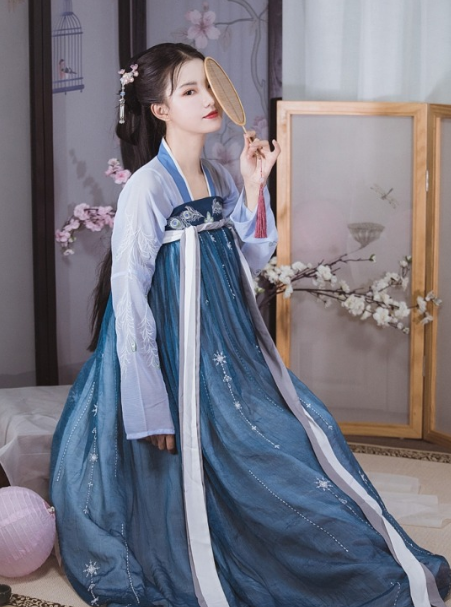
Customization Options
Tailor-Made Hanfu: Tailor-made Hanfu has gained popularity, allowing individuals to have garments designed and fitted specifically to their body measurements. This customization enhances comfort by ensuring a perfect fit.
Mix-and-Match: The ability to mix and match different Hanfu components, such as tops and bottoms, enables wearers to create outfits tailored to their preferences and comfort needs.
Influence of Technology
3D Printing: In some cases, 3D printing technology has been used to create intricate accessories and ornaments for Hanfu. While not directly impacting the comfort of the clothing, these technological innovations add to the aesthetics and personalization options.
In conclusion, modern adaptations and innovations in Hanfu design have led to a more diverse range of styles and materials. These changes have significantly influenced its comfort level, making it more adaptable to contemporary lifestyles and preferences. Whether it’s through the introduction of new materials, functional design modifications, or customization options, these innovations have made Hanfu a more comfortable and versatile clothing choice in the present day.
Cultural Significance vs. Comfort
The balance between the cultural significance of Hanfu and its comfort as everyday clothing is a critical aspect to consider when discussing the adoption and acceptance of this traditional Chinese attire in contemporary society.
Cultural Significance
Historical Roots: Hanfu carries deep historical and cultural significance, reflecting China’s rich heritage. It connects wearers to the traditions and customs of ancient Chinese dynasties, emphasizing a sense of identity and continuity.
Ceremonial and Festive Wear: Hanfu is often worn during cultural ceremonies, festivals, and traditional events. Its use in such contexts reinforces its cultural importance and symbolizes respect for tradition and heritage.
National Pride: For some individuals, wearing Hanfu is a form of expressing national pride and a way to preserve Chinese culture and values. This cultural significance can outweigh concerns about comfort.
Comfort as Everyday Clothing
Practicality for Modern Life: The traditional design of Hanfu, with its layered construction and intricate accessories, may not always align with the practical demands of modern life. Everyday activities like commuting, working, or shopping may require clothing that offers more convenience and comfort.
Climate Considerations: The choice of materials and layering in Hanfu may not always be suitable for different climates. In regions with extreme weather conditions, the comfort of Hanfu as everyday wear can be a concern.
Personal Comfort Preferences: Comfort is a subjective matter, and individuals have varying preferences. Some may find Hanfu comfortable for daily wear, while others may prefer modern clothing styles that offer greater ease of movement and functionality.
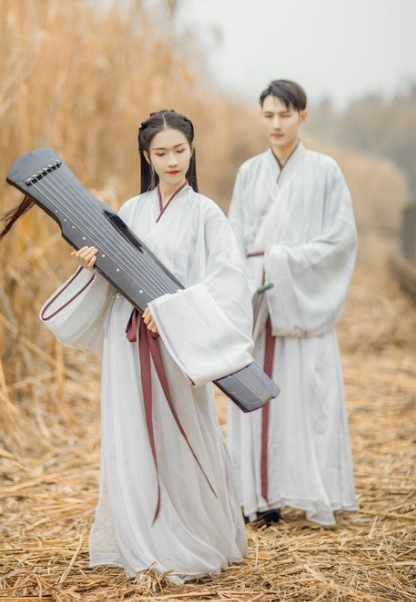
Balancing Act
Adaptations for Comfort: To strike a balance between cultural significance and comfort, modern adaptations of Hanfu have emerged. These adaptations focus on making Hanfu more comfortable for everyday use by using lighter fabrics, simplifying designs, and incorporating practical features.
Wardrobe Diversity: Many individuals opt for a diverse wardrobe that includes both Hanfu for special occasions and modern clothing for daily comfort. This approach allows them to celebrate their cultural heritage while also meeting their comfort needs.
Educational Efforts: Educational initiatives promote a deeper understanding of Hanfu’s cultural significance, which can foster acceptance and appreciation. This understanding may lead to a greater willingness to wear Hanfu on special occasions, even if it is not worn daily.
In conclusion, the balance between the cultural significance of Hanfu and its comfort as everyday clothing is a complex and personal decision. While Hanfu holds a profound cultural value, individuals must weigh their personal comfort preferences, climate considerations, and practical needs when deciding when and how to incorporate it into their wardrobes. Modern adaptations and educational efforts play a role in bridging this balance for many people.
Fit and Tailoring
The importance of achieving a proper fit through meticulous tailoring is paramount when it comes to ensuring the comfort of wearing Hanfu. Ill-fitting Hanfu can result in discomfort and hinder the overall experience.
Customized Fit
Individual Body Measurements: Hanfu is traditionally designed to be loose-fitting, but the key to comfort lies in tailoring it to an individual’s specific body measurements. This ensures that the garment drapes well and allows for ease of movement.
Tailor-Made Hanfu: Tailor-made Hanfu, crafted by skilled artisans, involves taking precise measurements and creating garments tailored to the wearer’s body. This personalized approach guarantees a superior fit that enhances comfort.
Importance of Proper Fit
Freedom of Movement: A well-fitted Hanfu allows for unrestricted movement. This is particularly important for activities such as walking, sitting, or participating in traditional dances and ceremonies.
Comfort During Extended Wear: Hanfu may be worn for extended periods during cultural events and festivals. A properly tailored Hanfu minimizes discomfort, such as chafing or constriction, allowing wearers to enjoy these occasions to the fullest.
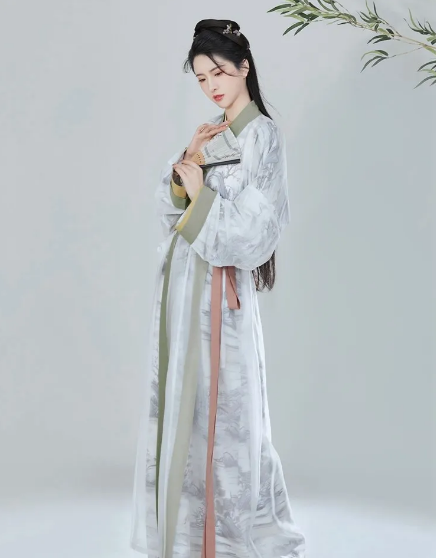
Tailoring Techniques
Seam Placement: The placement of seams in Hanfu is critical to its fit and comfort. Expert tailors carefully consider the location of seams to ensure they do not rub against the skin, causing irritation.
Adjustable Features: Some modern adaptations of Hanfu incorporate adjustable features such as drawstrings or ties. These allow wearers to make minor adjustments for comfort without compromising the traditional look.
Maintaining Tradition
Preserving Traditional Aesthetics: Proper tailoring ensures that the aesthetics of Hanfu, including its traditional silhouette and flowing lines, are maintained. It balances modern comfort with respect for the historical design.
Respect for Cultural Norms: In formal or ceremonial settings, wearing a well-tailored Hanfu demonstrates respect for cultural norms and traditions, enhancing the wearer’s sense of belonging and identity.
In conclusion, fit and tailoring are pivotal aspects of ensuring the comfort of wearing Hanfu. Customized fit, attention to detail in tailoring techniques, and the balance between tradition and comfort are all key considerations. Well-tailored Hanfu not only enhances physical comfort but also preserves the cultural significance and aesthetics of this traditional Chinese attire.
Personal Experiences
To gain valuable insights into the comfort of wearing Hanfu, it is essential to listen to the personal experiences of individuals who wear this traditional Chinese attire regularly. Their firsthand accounts provide a nuanced perspective on the subject.
Comfort in Everyday Life
Ease of Movement: Many individuals who wear Hanfu daily appreciate the comfort it offers in terms of movement. The loose-fitting design allows for natural and unrestricted mobility, making it suitable for various activities, including walking, working, and socializing.
Climate Adaptability: Some Hanfu enthusiasts note that the choice of fabric and layering techniques make Hanfu adaptable to different weather conditions. Silk Hanfu, for example, is lauded for its ability to keep wearers cool in summer and warm in winter.
Cultural and Emotional Connection
Cultural Pride: Individuals who wear Hanfu regularly often express a strong sense of cultural pride and identity. They value the connection to China’s historical traditions and feel a deep emotional attachment to the attire, which enhances their overall comfort and confidence.
Positive Feedback: Many Hanfu wearers report receiving positive feedback and admiration from others when wearing this attire. The encouragement and recognition they receive contribute to their comfort and sense of self-worth.
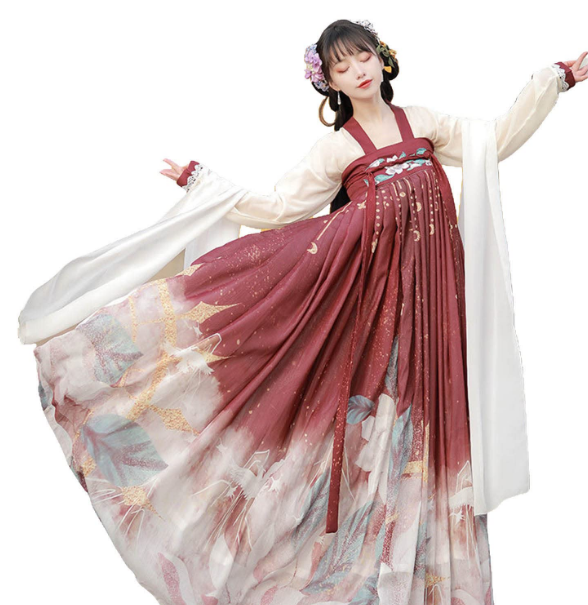
Challenges and Adaptations
Layering in Modern Life: While some appreciate the layering aspect of Hanfu, others find it challenging in modern, fast-paced environments. They may adapt by choosing simplified Hanfu designs that offer more convenience and comfort for daily wear.
Tailoring and Customization: Some individuals emphasize the importance of proper tailoring and customization. They describe how a well-fitted Hanfu significantly improves comfort and how tailor-made can be more than off-the-rack options.
Occasional vs. Everyday Wear
Differing Perspectives: Hanfu enthusiasts have varying perspectives on whether Hanfu should be worn occasionally for special events or as everyday clothing. Some prefer to reserve it for special occasions due to its cultural significance, while others find comfort in incorporating it into their daily wardrobes.
Conclusion
Personal experiences of individuals who regularly wear Hanfu reveal a complex interplay between comfort, cultural significance, and personal identity. While there are common themes of ease of movement, climate adaptability, and emotional connection, there are also individual preferences and adaptations that shape how Hanfu is integrated into their lives. These insights provide a deeper understanding of the multifaceted nature of Hanfu as a clothing choice.







